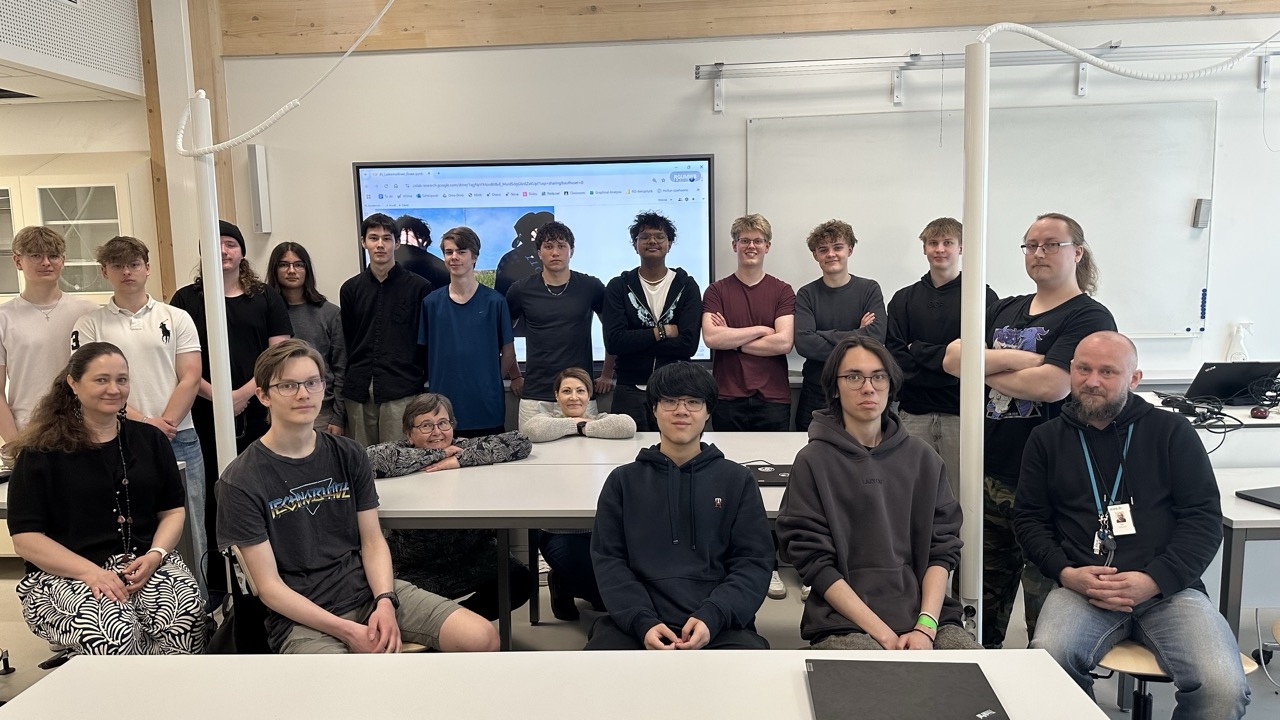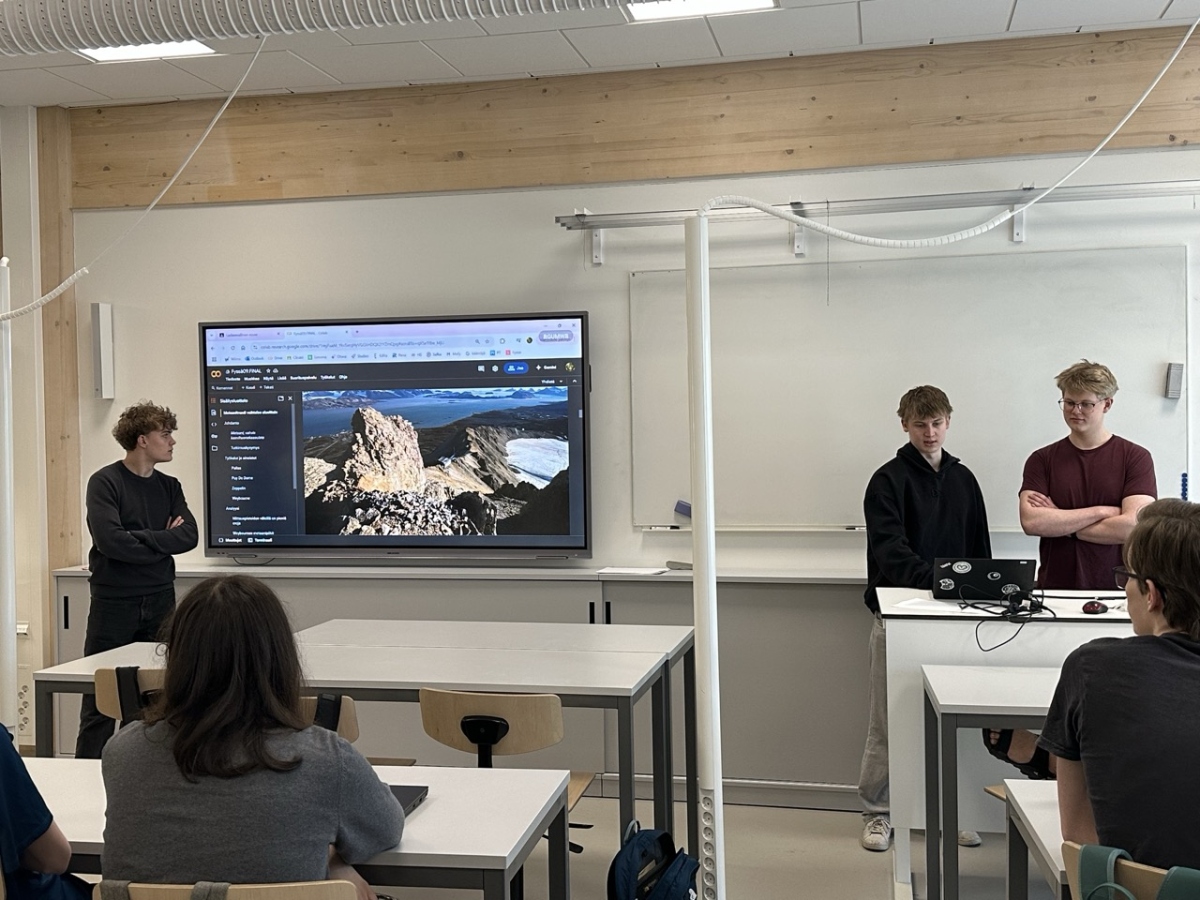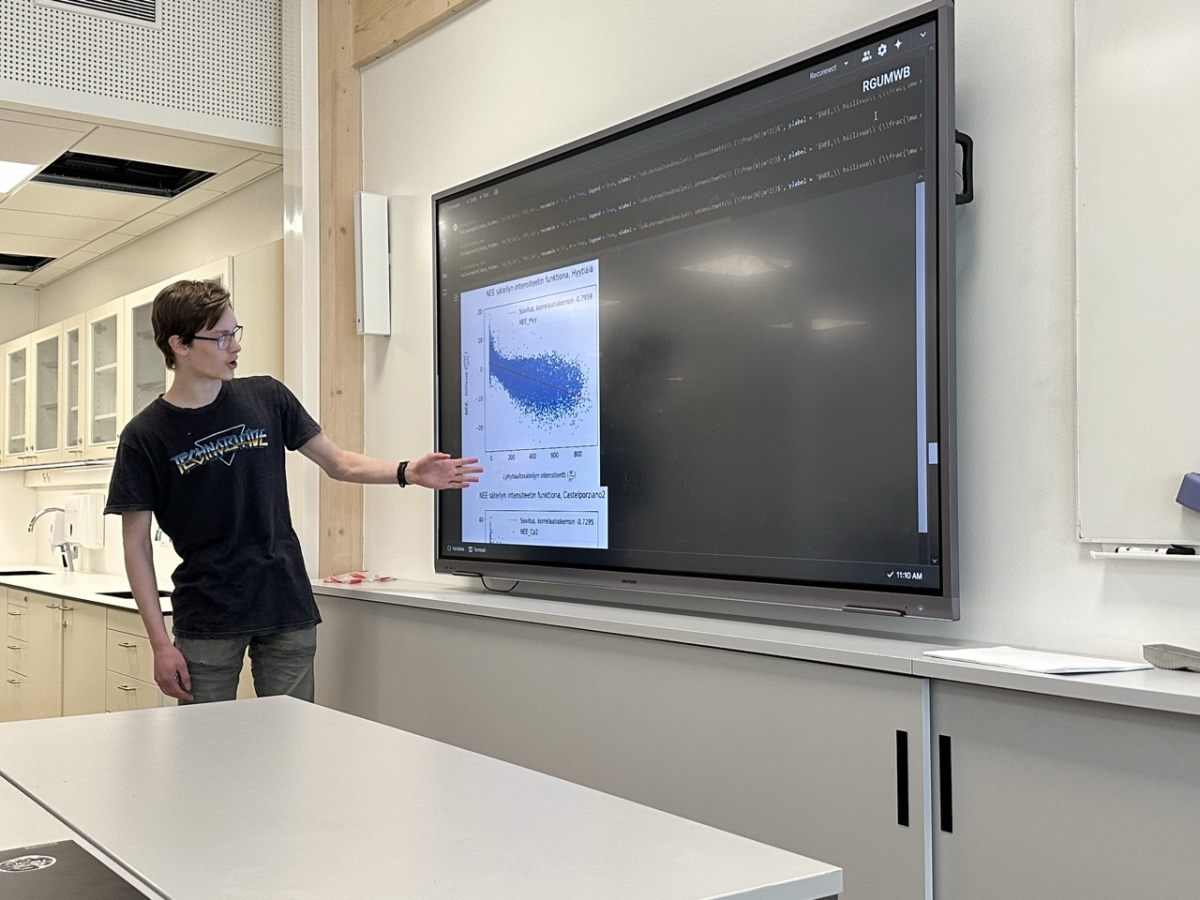
ICOS data was used by upper secondary school students in Finland as part of a course called Open Data. The course was taught to second-year students at the Helsinki Upper Secondary School of Natural Sciences. The course taught important researcher skills and helped to improve scientific literacy.
The students worked in groups or independently to conduct their own research on a topic of their choice. In May 2025, a couple of weeks before the end of the school year, they presented their research to their teachers and peers, as well as to Elena Saltikoff and Ville Kasurinen from the ICOS Head Office, who also provided comments and helped explain any unclear topics. This was the second time ICOS data has been used in teaching at this school – the first pilot was held last year under a slightly different concept.
Altogether seven groups or individuals presented topics ranging from methane concentrations at various ICOS sites to temperature anomalies and their relationship with CO₂ levels. The presentations also explored the effects of solar radiation on carbon sequestration, plant activity in response to climate change, and potential correlation between vegetation type and carbon uptake.
The groups used data from ICOS stations such as Hyytiälä, Zeppelin, Izaña, and Hohenpeissenberg. The datasets allowed students to investigate spatial and temporal patterns in greenhouse gas dynamics and ecosystem responses.
“I think the topics were well chosen. This year there was more focus on methane compared to last year. I was pleasantly surprised, as CO₂ tends to dominate public discussion, yet there are many aspects of methane that are still being actively debated within the scientific community,” says Elena Saltikoff, Head of Operations at ICOS.

ICOS and Helsinki school continue collaboration for a second year
The Helsinki Upper Secondary School of Natural Sciences is a Finnish-language general upper secondary school with a special educational task in natural sciences. The school is conveniently located between the ICOS Head Office, the Finnish Meteorology Institute (FMI), and the University of Helsinki. This brings some benefits to teaching: the school has access to the University of Helsinki laboratories, and university researchers are also able to support the teachers.
This year, for example, the structure of the course was built on the freely available examples produced by the Open Data & Education project at HIP (Helsinki Institute of Physics). Peitsa Veteli, a PhD researcher at HIP working on authentic open data usage, was at hand to support the teachers with their programming as well as providing the students with a bit of philosophical context into the nature of their inquiries.
This multidisciplinary approach is also emphasised in the national upper secondary school curriculum, which aims to build transversal competences to prepare students for the working life.


Learning research skills was a central part of the course. While working with ICOS data, students practiced skills such as analysing their data, and assessing conflicts between their data and research questions. They were given full freedom to define their own research questions and decide whether to work independently or in groups. The teachers supported the students by providing data and answering open questions along the way.
For some of the students, this might well be the starting point for a future career as a researcher.
"Using ICOS data encouraged students to think about how data is measured and presented. We had some really good discussions about why there might be gaps or odd values in the data, and other similar questions,” says Pauliina Kuokka, the teacher of the course. “In school physics lessons, students usually collect around 5-10 data points, or at most a few hundred when using a digital sensor. This time, they learned what it’s like to work with thousands upon thousands of measurements, and why it makes sense to calculate daily or monthly averages from such large datasets”, she says.
"Engaging with real topics and measurements from today's research projects connects the students to the world around them, making science that much more concrete for them. Appreciating the work that goes into gathering, analysing and presenting the data promotes scientific literacy among and broadens their epistemic ownership of the work they have done over these weeks”, Peitsa Veiteli concludes.